Baarb - Jun 27, 2011 11:30 am - Hasn't voted
MothsOften saw thousands of moths 4000 m up a particular volcano in Mexico. Given that they were usually dead I suspected that they didn't intend to be but maybe there was some reason for it after all.
Moogie737 - Jun 27, 2011 2:24 pm - Voted 10/10
Beetles bag a 13er!Very good article. I was on the summit of Nevada's tallest, Boundary Peak, on the first day of summer last week (June 21, 2011) and we experienced exactly what the article described. I had seen them before on Wasatch 11ers, but never higher until last week. I took a picture but I don't think that I can attach it here. Let me know if you would like it.
Redwic - Jun 27, 2011 7:45 pm - Hasn't voted
Re: Beetles bag a 13er!If you PM me the link, I will attach it. I definitely want to see it, as that would be the highest elevation yet (of such encounters I have heard of, at least).
MarekB - Jun 29, 2011 1:49 pm - Voted 10/10
Thanks!A very thoroughly researched and scientifically accurate article! And a good read, too.
Ejnar Fjerdingstad - Jun 30, 2011 8:52 am - Voted 10/10
Very interestingindeed, though I don't remember seeing ladybugs on Alpine summits. They are very common in Denmark, though, where they are known as 'mariehøns' (literally 'Mary's chickens').
Mike Lewis - Jul 1, 2011 1:54 am - Voted 10/10
Do youteach college level english? Impressive article.
Redwic - Jul 1, 2011 6:43 am - Hasn't voted
Re: Do youOnly to your brother! j/k
Thank you for the comment.
Mark Doiron - Jul 1, 2011 7:41 am - Voted 10/10
Very InterestingI heard about and saw this for myself on the top of Tooth of Time in NM. Not only were there ladybugs, but lots of gnats as well. I also saw the ladybug congregation while hiking the Mist Falls Trail in SEKI.
--mark d.
wyopeakMike - Jul 3, 2011 12:18 am - Voted 10/10
not so ladylikeI have seen them on many summits here in Western Wyoming and Eastern Idaho and I have found out that they can sometimes be not so nice. I was sitting on Baldy Mountain in Eastern Idaho amongst swarms of them and they kept landing on me and biting me. I have been bitten before, mean little ladies they are.
americanswiss - Jul 5, 2011 11:40 pm - Hasn't voted
ThanksI have wondered about this for years. They can be annoying at the top of a summit sometimes. Thanks for addressing this. Mystery solved.
kilimanjaro1 - Jul 6, 2011 12:49 pm - Hasn't voted
Me tooI saw a giant swarm on Mt Herman summit, Colorado a few years ago. I took a few pictures...thought it was really neat. Now where the heck are those pictures?
Sean Kenney - Jul 8, 2011 6:20 pm - Hasn't voted
COOL!I found a group on Wonoga Peak here in California.
Steven Cross - Jul 10, 2011 3:11 pm - Voted 10/10
Ladybugs on Greenhorn MountainI just saw this phenomenon at about 11,300 feet on Greenhorn Mountain here in Colorado on July 4th. My 3 year old son really enjoyed seeing so many ladybugs. The number of ladybugs was probably in the hundreds or lower thousands, not as many as I have seen in the past. The last time I saw this was on Sitgreaves Mountian near Flagstaff AZ about 10 years ago.
donhaller3 - Jul 25, 2011 2:12 pm - Voted 10/10
"hilltopping"Very interesting. Sharon, our three boys and I walked up Lookout Mountain, Wallowa Mountains in 1984(?). The highest point was a cluster of large boulders, the highest of which was covered by a similar swarm of lady bugs. End of my knowledge. (Lookout Mountain does not have a lookout and is above Hobo Lake on the divide between the Lostine and Minam drainages. Class 2 from the ridge that ends immediately south of Hobo Lake.)
Ahem. With butterflies, this is called hilltopping and is connected with congregating for mating. Even you butterfly haters have likely seen it. The congregating butterflies, not mating. Mating, of course, would be an unforgivable distraction from summiting.
Ahem 1.1. Hilltopping lady bugs are one tiny part of the fascination of the mountains. Not for those who cannot see the mountains for the summits.
Don
selinunte01 - Jul 25, 2011 5:38 pm - Voted 10/10
Nice readthanks for that! I once saw hundreds of those bugs on the slopes of Aetna volcano in Sicily at about 2600 m / 8500 ft altitude and I was wondering what they did there.
Cheers, Michael
AriehDavid - Jul 26, 2011 11:12 am - Hasn't voted
ever been bitten?I was on the summit of Black Marble Mountain in California and I don't know if it was just sticky legs or what, but I could have sworn they were biting me.
Redwic - Jul 26, 2011 1:05 pm - Hasn't voted
Re: ever been bitten?That is entirely possible. Others have suggested that, too.
I assume you were not wearing a red shirt with black polka dots, or else biting by the ladybugs might have been the least of your concerns. lol j/k
chris9876 - Aug 14, 2011 9:24 am - Hasn't voted
Thanks!Well, I'm just back from a mountaineering trip and I went on several glaciers the passed week. I permanently wondered about the crowds of ladybugs! Thanks for your enlightening report!
Willoughby - Oct 21, 2020 12:11 pm - Hasn't voted
Timing depends on the speciesWhile Convergent Ladybugs drop back down to winter at lower elevations, species like Casey's Lady Beetle (Hippodamia caseyi) actually spend the winter stuffed into crevices on rocky high points throughout the Sierra-Cascades. They select prominent rocks with southern exposure that will remain snow-free and warm quickly in the sun. This species doesn't summit until Sept/Oct.


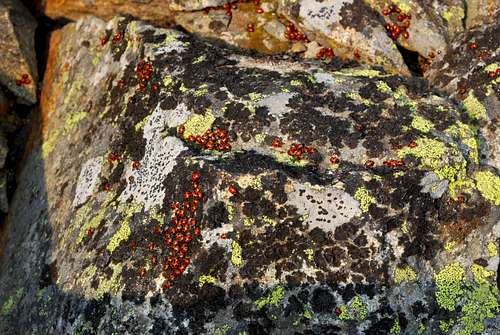
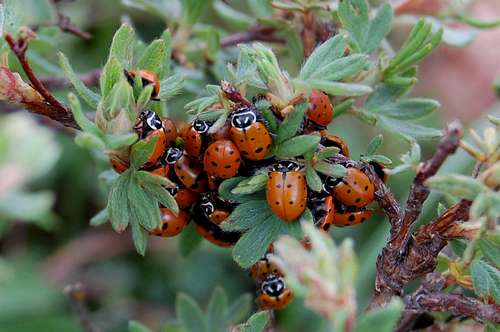

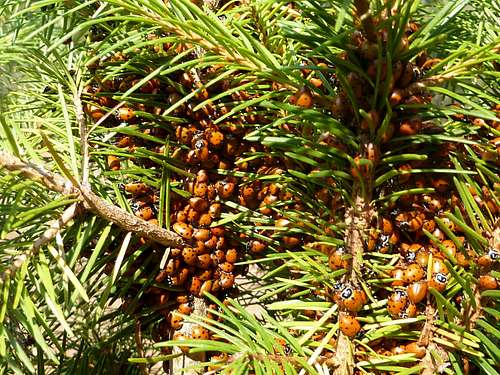
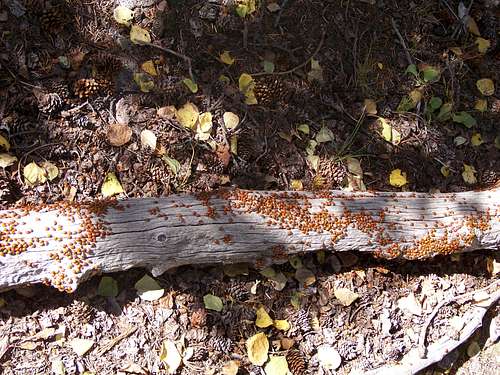
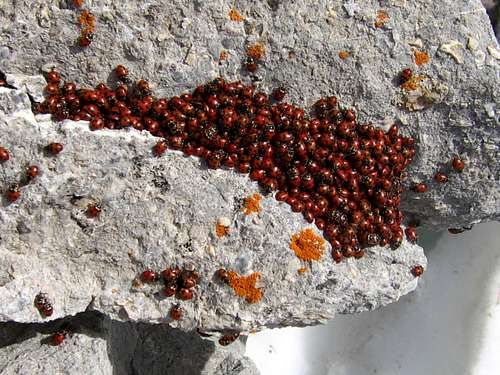
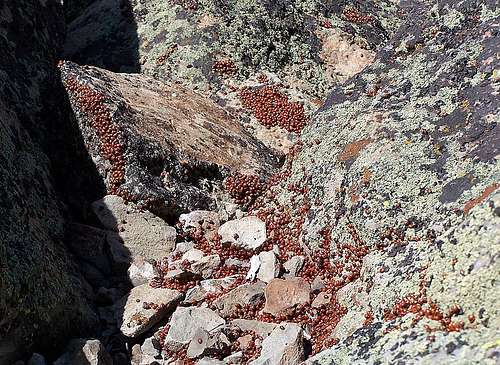
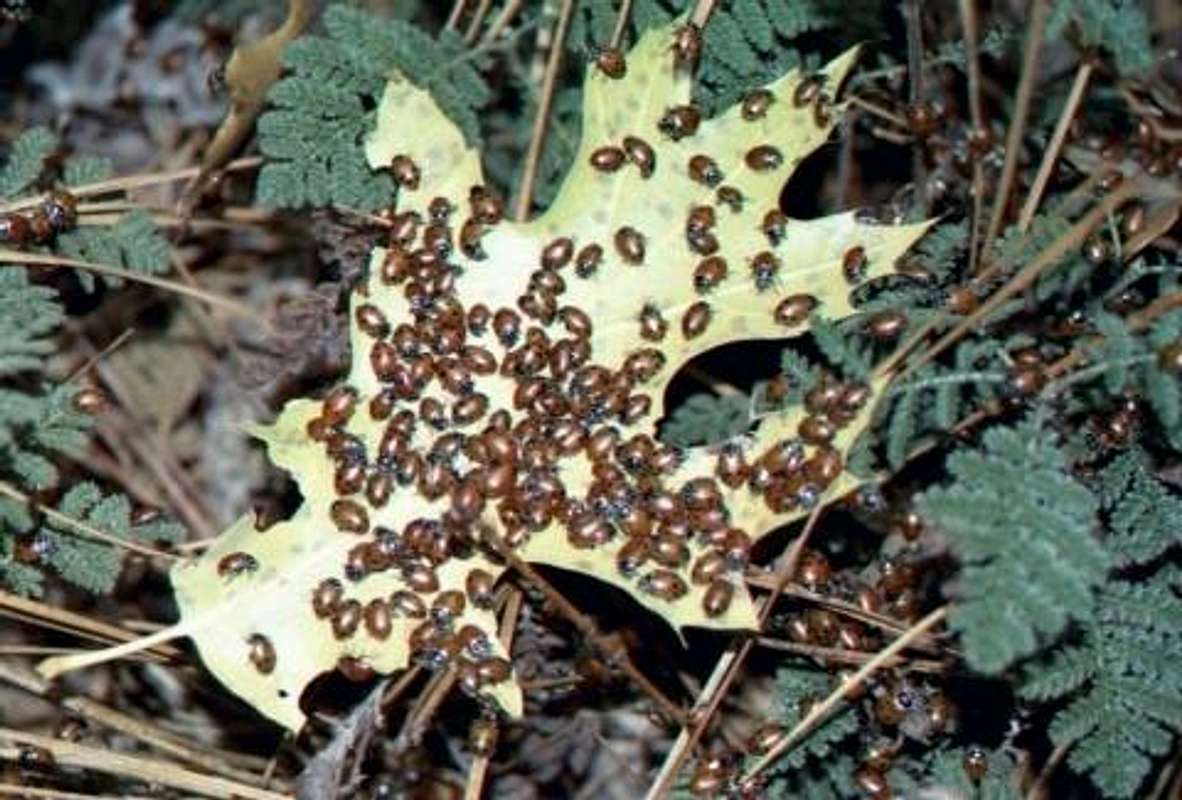
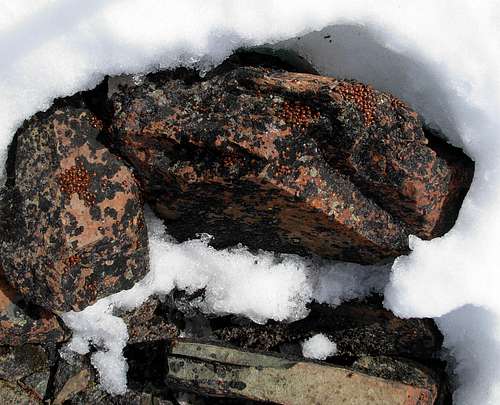















Comments
Post a Comment